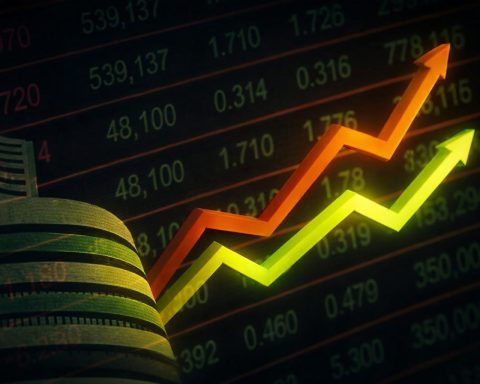Summary: Gold is trading just over the $4,000/oz mark today as a softer dollar earlier in the session and growing expectations for another U.S. rate cut buoy bullion. The world’s biggest official-sector buyer—China—also extended its gold‑buying streak in October, underscoring persistent central‑bank support. A record‑long U.S. government shutdown has delayed key data releases, pushing traders to lean on private labor indicators and policy signals. [1]
Live gold price snapshot (as of Friday, 7 November 2025)
- Spot gold: $4,005.53/oz at 07:02 GMT, up ~0.7% on the day and hovering above the psychological $4,000 level. U.S. December futures were around $4,004/oz at the same time. Gold is still ~8% below the 20 October record high of $4,381.21/oz. [2]
- Asia hours context: Near midday in Asia, spot traded around $3,991/oz (11:55 a.m. Singapore), with traders leaning into December rate‑cut odds after weak private labor indicators. [3]
Editor’s note: Intra‑day price swings mean “weekly change” signals are mixed across publications; the market has been essentially flat to marginally positive/negative this week depending on the snapshot time. [4]
What’s moving gold today
1) Rate‑cut expectations firmed. Private‑sector labor reports signaled a softer U.S. jobs backdrop, nudging odds higher for another Fed cut in December. That combination supported non‑yielding assets like gold during Friday’s session. [5]
2) A softer dollar earlier in the day. The greenback slipped to a one‑week low on Thursday before stabilizing, making dollar‑priced bullion more affordable for non‑U.S. buyers and helping gold hold the $4,000 handle. [6]
3) A historic U.S. data blackout. The longest U.S. government shutdown on record has delayed major economic releases (including the nonfarm payrolls report), forcing markets and the Fed to rely on private indicators—an uncertainty premium that tends to favor safe‑haven gold. [7]
4) Central‑bank demand remains a tailwind. Fresh October figures show the People’s Bank of China increased holdings for a 12th straight month, to 74.09 million fine troy ounces (valuation $297.21 billion), reinforcing structural demand under the market. Broader WGC data also show strong official‑sector buying through Q3. [8]
Market detail and cross‑asset context
- U.S. yields & policy tone: Bond yields fell sharply on Thursday after a spike in planned layoffs data, with some Fed officials sounding cautious given the shutdown‑induced data gaps—another supportive mix for bullion into Friday. [9]
- Other precious metals: In today’s trade, silver firmed to around $48.69/oz, with platinum and palladium also higher on the day. Moves here often track gold’s macro impulse and industrial‑demand headlines. [10]
India gold rate today (quick reference)
Retail prices in India reflect global moves plus taxes, duties, and local premiums. As of this morning’s update:
- Delhi: ~₹12,273 per gram (24K); Mumbai: ~₹12,258; Chennai: ~₹12,350. (22K and 18K rates adjusted lower accordingly.) City quotes vary by jeweler and time of day. [11]
Big picture: where we are versus the peak
Gold’s late‑October record at $4,381/oz set a high‑water mark on rate‑cut hopes, geopolitical risk, and strong official‑sector and ETF demand. Even after a pullback, price levels remain historically elevated, with structural buyers continuing to accumulate. [12]
Key levels and what to watch next
- $4,000/oz remains the pivotal intraday battleground. A sustained hold above it keeps the path open toward $4,050–$4,100, while repeated dips below $3,970–$3,950 would risk a deeper corrective leg. (Technical zones are indicative, not guarantees.)
- Catalysts: Any progress toward ending the U.S. shutdown (restoring official data), further private‑sector labor reads, and December‑meeting Fed signals. Watch central‑bank reserve disclosures—especially from Asia—for confirmation of continued official buying. [13]
FAQs
Is gold “expensive” at $4,000/oz?
Relative to history, yes; relative to the current macro mix—lower expected policy rates, lingering trade frictions, and elevated official‑sector demand—prices reflect a market that is still well‑supported by structural buyers. Recent WGC data show investment and central banks remain important pillars. [14]
Why are official data missing today?
The U.S. shutdown has halted publication of several marquee economic reports (including today’s jobs data), pushing traders to lean on private indicators until normal releases resume. [15]
Does China’s buying really matter to daily prices?
Single‑month additions rarely move intraday prices by themselves, but a 12‑month accumulation trend from the world’s second‑largest economy helps underpin the medium‑term bid for gold. [16]
Methodology & sources (selected)
Real‑time and near‑real‑time price and macro headlines from Reuters and Bloomberg (via Moneyweb); official‑sector flows from the World Gold Council; and India retail pricing snapshots from Moneycontrol. Quotes and statistics are time‑stamped within their source articles and may differ modestly across venues due to delays and methodologies. [17]
This article is for information only and does not constitute investment advice.
References
1. www.reuters.com, 2. www.reuters.com, 3. www.moneyweb.co.za, 4. www.reuters.com, 5. www.reuters.com, 6. www.reuters.com, 7. www.reuters.com, 8. www.tradingview.com, 9. www.moneyweb.co.za, 10. www.reuters.com, 11. www.moneycontrol.com, 12. www.reuters.com, 13. www.reuters.com, 14. www.gold.org, 15. www.reuters.com, 16. www.tradingview.com, 17. www.reuters.com








